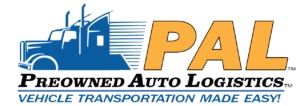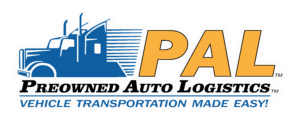The Digital Shift in Auto Transport: Embracing Electronic Bills of Lading
The Digital Shift in Auto Transport: Embracing Electronic Bills of Lading
Logistics leaders are increasingly investing in next-generation digital technologies, with many expecting to adopt at least ten new digital use cases in the next three years. McKinsey’s recent survey of over 260 respondents highlights high digital adoption rates and a growing interest in advanced generative AI technologies.
One significant development is the use of electronic bills of lading (eBOL) in auto transport. Preowned Auto Logistics has adopted eBOL to enhance shipment accuracy, reduce delays, and streamline paperwork, ultimately saving time and money. This blog post will explore how bills of lading are driving the digital transformation in the car transport industry.
What Is a Bill of Lading and Why It Matters
A Bill of Lading (BOL) is an essential document in the shipping and logistics industry, particularly for vehicle transportation. Acting as both a receipt for the shipment and a contract between the carrier and the shipper, it plays a significant role. A solid grasp on the details of a BOL can aid both shippers and carriers in resolving disputes related to vehicle transport and in applying relevant legal principles.
Definition and legal role of a bill of lading in vehicle shipping
A carrier’s bill of lading serves as formal documentation indicating the receipt of goods for transit and carries legal obligations. It details the type and quantity of goods as well as their intended destination. Legally, the BOL fulfills three main functions:
- Receipt of goods: This confirms that the carrier has received the vehicle in its obvious good condition and the stated quantity. The BOL would contain evidence of condition so that if a disagreement or claim arose, a record existed.
- Evidence of contract: The BOL shows a contract between the shipper and carrier, the terms of the transport agreement, including responsibilities, liabilities, and payment liabilities by the shipper and carrier.
- Document of title: In some cases, the BOL may be evidence of ownership upon receipt of goods. For vehicle transport, this could apply if ownership is transferred.
Traditional (Paper) BOL vs. Electronic BOL (eBOL)
For many years, the conventional paper bill of lading has been the industry standard. However, with advancements in technology, the sector has transitioned to the electronic bill of lading (eBOL). Each type of bill of lading comes with its own advantages and disadvantages.
Traditional (Paper) BOL:
- Advantages: Simple and well-understood, with broad acceptance and design. Paper BOLs also possess legal acceptance in many jurisdictions.
- Disadvantages: Paper BOLs can be lost, damaged, or delayed, creating possible disputes. They also have tagged costs like printing and postage.
Electronic BOL (eBOL):
- Advantages: eBOLs allow for electronic documentation, significantly speeding up the shipping process. They allow for real-time tracking and updates, thus preventing loss and delay.
- Disadvantages: Successful implementation of eBOLs can be hampered by traditional entities. Additionally, electronic systems have to be adopted with new security protocols to manage and protect sensitive information.
Moving away from traditional to electronic processes related to BOL represents a commitment to the overall logistics industry with a focus on enhancing the shipping process with efficiency and responsiveness.
How the BOL protects both the customer and the carrier
The bill of lading offers protection to both the shipper (customer) and the carrier in the following ways:
For the customer:
- Proof of ownership and condition: The BOL provides documented evidence of ownership and the condition of the vehicle at the time of shipping. This documentation is helpful in case a damage/theft claim needs to be filed due to damage or loss of a car in transit.
- Clear terms and conditions: The BOL gives the customer the terms of the shipping agreement and explains what the customer can expect and what responsibilities the carrier has.
For the carrier:
- Limitation of liability: The BOL usually has wording that restricts the carrier’s liability in the event of damage/loss as long as the carrier completes its responsibilities as indicated on the BOL.
- Reduced risk of disputes: A well-drafted BOL helps reduce misunderstandings/conflicts between the shipper and carrier, providing for smoother transactions and greater comfort for both parties.
Why the Auto Transport Industry Is Shifting to Digital BOLs (eBOLs)
eBOLs, or electronic bills of lading, are quickly becoming the standard method of documentation in auto transport due to the efficiencies they enable compared to paper bills of lading. As companies continue to look for newer, novel ways to improve their efficiencies and accuracy, eBOLs will continue to change the way companies shipping vehicles perform their shipments. Here are some of the benefits of eBOL:
Fast documentation and processing time
The most significant difference in auto transport eBOL is the amount of time for documentation, document processing, and shipping. With traditional paper bills of lading, the time from preparation to mailing and waiting for delivery could take several days, depending on the postal service. eBOL auto transport contributes to this issue as eBOL offers the opportunity for fast document preparation and immediate sharing of documents with the end client. Carriers can upload their documents via a secure site and share the eBOL with the client, where eBOL sharing is done in real-time, making it extraordinarily quick and efficient.
Example
For example, if the client were shipping a vehicle from California to New York, the client may wait several days for the bill of lading to arrive. By the time the client gets the bill of lading and prepares to transport the vehicle, several days may have passed. eBOLs offer an immediate benefit in that now the client can receive the documentation in a matter of minutes and can pick up the vehicle much faster. Thus eliminating waiting time.
Improved accuracy and fewer errors
Paper bills can have potential human errors when data is entered. An incorrect name, address (pickup/delivery) or incorrect vehicle represented could be painful at a later time. Shipping a car with eBOL can protect auto transport companies from wrong documents. It can have an actual validation or method of data directly inputted to enhance the accuracy of the bill. So, a starting point with accuracy and correct paperwork will lead to less guessing, less complicated issues or re-work, and a smoother transaction.
Example
For example, if the carrier using a paper BOL made a wrong vehicle identification number (VIN) on occasion, that could (in the end) lead to a longer delay, with many issues until the transportation is complete. With eBOL, all systems can automatically validate the VIN against a system with the lowest chance of this error.
Enhanced transparency and communication
Digital bill of lading provides real-time visibility of progress and notice of all businesses moving their vehicle. Customers have a way of accessing the status of their car by improving communications between themselves and the transport company. Transparency builds trust and the customer experience; this also allows your company to present to the customer as a more competent partner in their auto transport service experience.
Example
Clients can receive notifications at each vehicle stage, picked up, in transit, and delivered. A customer may click on a tracking feature to see how far their vehicle is from them during the move and feel more at ease. Another example is using automated email to keep clients updated on delivery progress, reducing customer service calls, follow-ups, and voicemails.
Better record-keeping and document security
In this all-things digital world, our ability to keep accurate records matters. eBOLs aid record keeping and do not require complex paper records to manage. They are secure on cloud-based systems that keep documents safe, and electronic documents are more reliable than paper-based documents, which can be lost and fade.
Example
If a transport company had a record of all their shipments from the past year, it could search and provide the information for an annual or compliance audit instead of extracting it from paper records. Consider the ability to instantly share records with clients or partners without losing them to improve communications or logistics co-management.

Benefits of Electronic Bills of Lading for PAL Customers
With international trade booming and supply chains getting more complicated, a digital solution is a natural consideration in how we manage logistics more efficiently and sustainably. The electronic bill of lading (eBOL) gives PAL customers a number of benefits. Let’s look at the main ones in detail:
Real-time status updates and visibility
Among the most discernible advantages of electronic bills of lading is the ability to track shipments in real time. Traditionally, shipping in the logistics sector relied on paper-based bills of lading, which implied some breaks in communication, as the update may take hours or, occasionally, days to reach a customer. Electronic bills of lading use digital platforms that give customers immediate notifications about the status of shipments. This advantage will enable customers to manage their supply chains more proactively because they can identify delays before matters get worse.
Faster Pickups and Deliveries by Reducing Documentation
eBOLs allow us to streamline the documentation process, whereas the unique identification numbers for bills of lading make the process easier to simplify paper documents, save time, and accelerate the clearance process when our customer is shipping and receiving. The faster PAL customers can facilitate the pickup and delivery stages of the logistics process, the higher customer satisfaction could be and ultimately reduce logistics costs.
Environmentally friendly process – reducing paper use
In the world we live in, sustainability is a high priority for businesses and families alike. eBOLs are particularly useful due to less paper use! Decision-making towards electronic documentation reduces paper but also the overall carbon footprint associated with producing, printing, storing, and transporting documents. Using electronic bills of lading can help PAL customers have a greener supply chain and meet business goals associated with environmental and corporate responsibility.
Peace of mind with digitally secured documentation
Another integrity mark for shipping documents is that security helps maintain faith in international trust for trade. Digital versions of documentation will limit the risk of loss, theft, and damage that comes with physical paper bills of lading. Digital documents are preserved in ways that are protected through encryption and backed up in multiple servers that ensure accessibility and preservation. This level of security helps PAL customers as shipping documents are preserved for record-keeping and protected against piracy and fraud.
How Preowned Auto Logistics Is Leading the eBOL Shift
Preowned Auto Logistics (PAL) is paving the way for innovation with the implementation of an Electronic Bill of Lading (eBOL) in its vehicle shipping platform. Not only does it streamline the process, but it enhances all aspects of service.
Adoption of eBOL technology in PAL’s vehicle shipping process
Preowned Auto Logistics is at the forefront of promoting the electronic bill of lading in auto transport. The digitization of the bill of lading enables PAL to process all shipping documentation electronically as opposed to on paper. The eBOL also permits the carrier and their client to gain access and share the necessary shipping documents almost instantaneously, which makes the shipping process smarter rather than longer. The digitization of bill of lading does not just lessen potential human error and mistakes in completing the required shipping paperwork but can also significantly improve and shorten transaction times.
A commitment to improving efficiency and the customer experience
PAL is committed to improving efficiency, demonstrated in that it is using digital bill of lading to create a more fluid experience for their customers. With the eBOL, customers can utilize live tracking of their shipping status; at a glance, they can see where their vehicle is and stay relaxed. Customer transparency creates more trust and increases engagement and satisfaction for the clients. Electronic bill of lading also enables faster dispute resolution, creating a more certain and reliable experience for the customer.
Smoother transactions and faster service turnaround time
Reports indicate that the shift to electronic Bills of Lading (eBOL) has significantly reduced transaction and turnaround times, with some studies showing a decrease of over 30% in the time needed to finalize shipping paperwork. These efficiencies lead to cost savings and increased client satisfaction. Overall, research demonstrates that the benefits of eBOL enhance a company’s market position and help them stay ahead of competitors.
What Customers Need to Know about Using eBOLs
When you ship something, the eBOL is like a receipt for your cargo. Here’s the typical process:
- The carrier will use a smartphone or tablet to access the electronic Bill of Lading (eBOL) for your shipment.
- Both you and the carrier can view and confirm shipment details in real time.
- After the delivery, the carrier can update the eBOL electronically to keep everyone informed.
Steps for customers to access or sign an eBOL
Accessing an eBOL is straightforward. Here are the steps you would follow:
Step 1: Check your email or notifications for a link to the eBOL.
Step 2: Click the link to view the document, it’s that easy.
Step 3: Review the shipment details, including items, destination, and delivery dates.
Step 4: If everything is correct, sign the eBOL electronically in the designated area.
Step 5: Confirm your acceptance, and a copy will be sent to you for your records.
Tips for reviewing digital BOLs before confirming shipment details
Before you hit that ‘confirm’ button, it’s crucial to review the eBOL carefully. Here are a few tips:
- Double-check item descriptions: Ensure all items listed are accurate to minimize discrepancies later on.
- Verify pickup and delivery information: Make sure the addresses, dates, and other logistics are correct.
- Look for special instructions: Check if there are any specific handling instructions mentioned that need attention.
- Confirm signatures: Ensure that any required signatures are completed, this can save you from delays.

The Future of Auto Shipping and Document Management: Embracing the Digital Age
New technology is simplifying vehicle logistics by reducing problems and allowing for live tracking of vehicles throughout their journey. This innovation speeds up processes by replacing lengthy paper forms with online documentation.
Companies like PAL are heavily investing in continuous innovation, particularly in AI and data solutions, to maintain a customer-centric approach. Their goal is to be proactive in adapting to changes, ensuring their services remain relevant and valuable. After all, outdated services are not beneficial.
The impact of digitization on the transport experience
Research indicates that companies leveraging digital tools can improve their transport efficiency by at least 20%. Additionally, digitalization significantly enhances the customer experience in transportation.
- Real-time tracking and visibility: Thanks to technologies like GPS and RFID, people can now track their shipments in real-time. This boost in transparency and dependability strengthens customers’ trust, as they can see exactly where their package is at any moment during delivery.
- Automated documentation: Digital documentation lets companies send complex files electronically, helping logistics experts cut mistakes and speed up shipping. Just getting rid of paper can improve transportation, since 6-12% of delays are linked to document issues.
Mobile app integration and online portals’ potential
Mobile applications and web portals are transforming the way we ship cars and providing huge advantages for companies and their clients:
- Convenience & access: Customers can use a phone app to book shipments, manage loading and unloading paperwork, and track their vehicles. Reviewers note that the instant digital access to features and documents appeals to younger users who favor mobile apps.
- Client interaction: Mobile and online apps enable shipping companies to connect with their customers, allowing for quick problem resolution and an enhanced overall experience.
- Built-in payment systems: The online platform allows customers to pay using credit cards and e-wallets directly through an app. With convenient payment options in mobile apps, customers enjoy the fast and easy process of paying for shipments instantly, fulfilling their desire for quick satisfaction.
PAL’s vision for continuous innovation in customer service
PAL is a leading vehicle shipping service provider dedicated to improving customer experiences with innovative solutions. Their mission focuses on innovation and establishing industry standards.
- Proactive customer support: PAL is advancing by investing in AI-driven chatbots that will provide 24/7 support, allowing customers to receive immediate answers at any time.
- Environmental initiatives: PAL is adopting sustainable practices by integrating electric and hybrid vehicles into their strategies. This approach appeals to eco-conscious consumers and positions PAL favorably for future emission regulations, making it an attractive option for environmentally friendly enthusiasts.
Conclusion
Switching from paper bills of lading to electronic ones offers significant benefits for car transport in today’s fast-paced logistics environment. Electronic paperwork minimizes errors, accelerates shipping, and provides real-time visibility into the supply chain, enhancing customer satisfaction.
PAL emphasizes the importance of technology in the car transport sector, highlighting its role in improving security and efficiency. By combining safety expertise with operational practices, PAL aims to enhance transportation efficiency and ensure reliable delivery for clients.
Contact PAL for a flexible, fully digital auto shipping solution that prioritizes customer experience while you manage your business operations.




